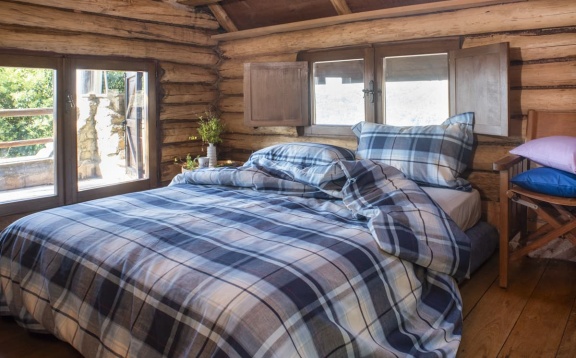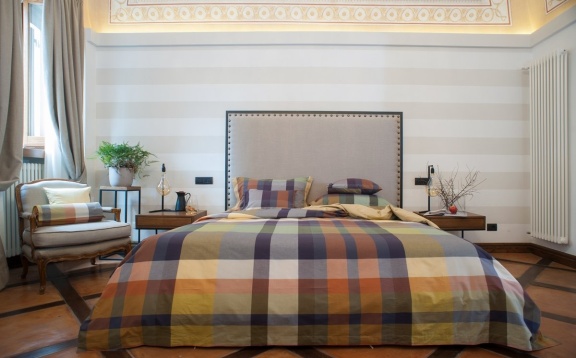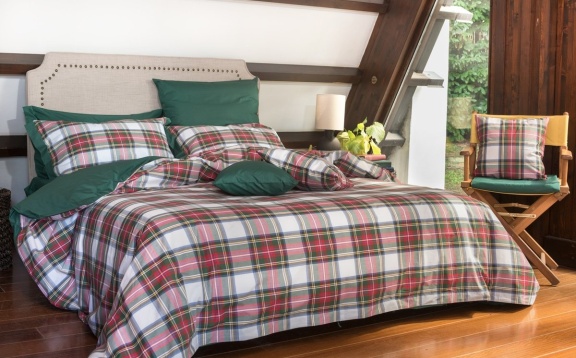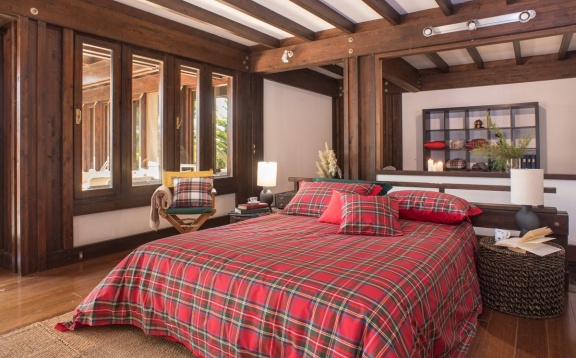Yarn dyed duvet covers.

Yarn dyed fabric has been discovered in ancient cultures back to 2600 BC - at that time and also now the dyeing involves that each individual thread is dyed before they all are woven into a pattern / design.
Each fiber (thread) requires a specific blend of dye in order for the fiber to absorb the colour. Before nealy all dyes were natural dyes derived from plants, roots, berries, bark, leaves, but now we use reactive dye for a long durability of the fabric.
So all yarn dyed fabric has been made by colored threads, which afterwards are woven into fabric on looms. The most known yarn dyed fabric is probably the Scottish tartan which before was wowen by stout Scottish women.
In our yarn dyed fabric a minimum of 60 x 60 single threads are used in warp and weft per cm2 . Thanks to the combing procedure, the shortest fibers are eliminated and the noble ones are aligned in the same direction. This allows you to make the fabric softer, more homogeneous and resistant
In this way the colors are more intense, penetrate deeper and last longer, even after years of washing
How to identify yarn dyed fabrics?
The front and back of the cloth do not match with each other. Fabrics appear with slightly raised textures woven into them often with jacquard weave
Piumini Danesi's eco-friendly bedding: each and every piece of fabric is torn straight thread (not cut) and hand sewn into a unique and exclusive bedding, in Sora - Italy.
The pillowcases are Oxford style, finished with a fabric hem of 7 cm border on the two short sides, adorned with a one line embroidery.
At the end of the the pillow case there is an envelope closure (flap inside of 22cm), so the pillow is tucked in and out of sight for a more finished look.The duvet cover has a tie closure, it is closed with hidden ribbons/tie at the bottom.
Browse our wide range of fitted sheets to combine with our duvet covers.
How to wash yarn dyed fabrics duvet covers
Wash white fabric at 60 °C. Wash colored at 40 °C. Wash bedding inside out to make it last longer. Do not use softener. Vinegar is a natural eco-friendly substitute. If you add a bit of white vinegar the colors will be brighter and your sheets will get softer.
You can delicately tumble dry the duvet cover, but we suggest line-drying. It gives a smoother result and it is better for the environment.
Made with care & attention to details In Sora-Italy







